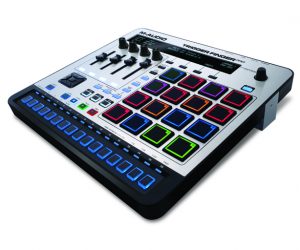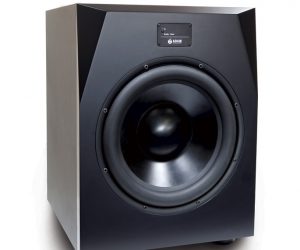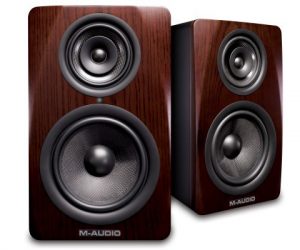
PC Audio 125
Imagine a world when our computers updated themselves automatically, so they could always offer us peak performance. What? They do, and it isn’t working?
I’ve just spent the last couple of hours trawling through various Windows Music forums, and the saddest thing I spotted were the doggedly ongoing discussions of how to effectively disable Windows 10 Auto Updates. This is rather ironic, especially since my chosen topic for PC Audio in AT123 was ‘There’s a new audio application update available. Should you install it immediately or wait a while?’ My advice there was to regularly use an ‘imaging’ utility to back up your entire Windows installation, so that in the hopefully unlikely event an update (whether Windows-based or specifically audio) causes you any problems, you can roll back to your most recent image file, and that advice stands.
However, Microsoft is still making things difficult for us musicians, by systematically removing any means to bypass its automatic updates. Windows 10 Pro owners can still delay updates, but Windows 10 Home users can no longer disable the Windows Update service since the ‘Fall Creators Update’ (Windows 10 1073). We wouldn’t mind if these automatic updates left our music software/hardware alone, but I’ve lost count of the number of musicians who have fallen foul of this, either due to subsequent problems with hardware, including eLicensers, audio interfaces, DVD drives and printers not being recognised after the update, or audio software that previously worked perfectly now crashing at random. One user who had followed my backup advice managed to roll-back to his previous Windows 10 version and cure his update problems, but was then left wondering just when Windows 10 would decide to have another go at silently updating his machine and re-introducing the problem.
TO INFINITY & BEYOND
Contrary to the old computer advice of “if it’s working, well, leave it alone”, that worked so well for many years with audio PCs, some issues after W10 updates now tend to be related to incompatibilities between older hardware drivers and older hardware. So, it now seems to pay to keep your hardware drivers as up-to-date as possible before Microsoft rolls out a major W10 patch. On the other hand, if you have experienced any of the problems mentioned above after a major update, roll back to your most recent backup, then update all your drivers, unplug non-essential hardware and let W10 try the update again.
As usual, a raft of industry experts pitch in to find longer-term solutions to these various problems. One useful source is the Knowledge Base at Driver Easy (www.drivereasy.com/knowledge), which fixes the DVD drive problem along with many others. For specific audio hardware/software issues the best sources are manufacturer/developer-dedicated forums, where if a problem occurs you can be assured of a host of grumbling musicians detailing their problems and (hopefully) a few who have found solutions, whether they be reinstalling or updating drivers (don’t forget those for your various eLicenser and iLok dongles!), or even temporarily uninstalling specific audio items that result in crashes until updated drivers can be released.
DENYING PERMISSION
However, the last great hope for mankind seems to be Martin Brinkmann at ghacks.net, who just two days before I wrote this column has posted a way to change the permissions of the Windows 10 task that is responsible for the update checks. It’s somewhat convoluted and involves typing in command prompts, but there are detailed step-by-step instructions (www.ghacks.net/2017/12/03/allow-only-manual-updates-on-windows-10), and even a reset command that will restore the permissions to the automatic mode if required. Your Windows Defender signature updates will still get updated (good news for security), and although automatic checks for updates will subsequently be thwarted, you can still perform manual checks for updates as and when the various music software forums declare them safe for the musician. It’s getting increasingly common for major developers such as Steinberg to recommend avoiding major operating system updates until they have been thoroughly tested by them post-release for unforeseen problems.
WOE IS ME
It does sometimes seem rather mad that so many of us seem to go through the same old problems on each Windows 10 update, but the fact remains that while the majority of business and home users sail through incremental changes regardless, largely because they opt for highly popular mainstream computers and peripherals, we musicians — who rely on relatively boutique audio interfaces, dongles and the like — end up with operating system support that lags behind Microsoft’s latest software incarnations. Some blame the audio manufacturers/developers themselves for not keeping up, or for not taking advantage of pre-release OS versions on which to test their wares. Still, the fact remains that we only find out which audio interface, DAW, dongle and peripheral combos will survive the update lottery once the new operating system is actually released into the big, wide world.
To reiterate, you can possibly save yourself a lot of stress by trying to keep abreast of driver revisions for your audio hardware, and making sure these are implemented before the next operating system update. Part of the problem is that Microsoft is pressured by market forces to include lots of new features in each update, as an enticement to stay ahead. In the old days we could decide whether or not we musicians would actually benefit from them in practice, and in many cases that answer was no, but nowadays that decision has been largely taken away from us.
I know plenty of musicians who have hung on with Windows 7 to escape the W10 auto-update carnage. Despite the huge number of us around the world involved in computer-based music-making, we are still very small fish in the grand scheme of things, and I don’t see that situation likely to change in the near future. Game players have more clout, which is why graphic performance has been given such emphasis over the last 10 years; clobbering the real-time performance of audio computers, resulting in clicks, pops and waveform glitches. Sometimes it’s good to have a moan though, isn’t it?
















RESPONSES